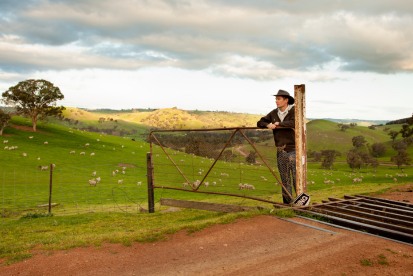I ran a google search for the term "farmer" this morning. My screen lit up with glorious images of farmers in the paddock or on tractors - seeding, harvesting, or checking the crops. Now, there was nothing wrong with these images, but I was struck by how no single image showed what farm businesses do off the paddock.
Yes, farming is a production-driven industry. But there's much more to it. Like any other business, it requires strategy, planning, and management. And underpinning the farm business strategy is the financial strategy. Unfortunately, many, especially young farmers, fail to understand its fundamental importance until they have to manage the entire farm business themselves.
You'll be surprised to know that David, our CEO, a sixth-generation farmer, fell prey to the same when he took over the family farm. In this blog, he shares his experience and practical advice about being budget ready; on how to make profitable, insights-driven decisions using budgets for farm business success
Lesson learnt: the hard way
When David took over the family farm in 1992, he wasn't budget-ready. There was a self-imposed ignorance, as even though he took charge of the operations, his parents continued to do all the strategy, budgeting, and bookkeeping. It was self-imposed because David didn't engage with the farm numbers despite constantly being exposed to them. Kent had always talked about cash flow, budgeting, and the importance of financial control. However, it took David another four years to truly understand and appreciate its value.
In 1996, a massive crash in wool prices led to a financial crisis for the family. David realized that had he been more financially proactive, he could have saved his father a lot of pain by sharing the burden of decision-making in times of limited capital. This experience taught him that financial management rigor is crucial for better business decision-making.
Engaging with farm numbers
David recommends engaging with farm numbers early. Also, the older generation should encourage the younger generation to start sharing financial responsibility and the pressure that comes with it to be prepared for when it becomes theirs.
He shared that the best way to engage with farm numbers is by looking at them in a farming grid consisting of three parts with decreasing levels of knowledge:
- The known: These are the numbers that you know, e.g., property payments for the next 12 months or the amount you paid for the fertilizer you already have in the shed.
- The known unknowns: These are the numbers of which you have a high level of awareness. But they are prone to changes. E.g., commodity prices; there are obvious pricing signals, but when they change, you don't know what the prices precisely will be.
- The unknowns: These are the risks of which you have absolutely no prior knowledge. E.g., The Ukraine war might lead to a labor shortage in Australia, affecting your harvest.
You need a strategy for the unknowns. This is where planning and budgeting come to your rescue. Begin by asking yourself these questions, in sequence, while considering an investment:
- Should I (profitability): Will I earn more than I spend? Is the gross margin of this investment positive, and if so, at what point does it become negative?
- Can I (feasibility): Do I have the capital to fund this investment? E.g., you want to defer all your grain sales to September as you could get a better price for it. But can you carry the debt, storage, and repayments you already have?
- How do I (strategy): How will I work out the cash flow for the investment, and how will I manage the risks?
A budget and cash flow forecast can help you answer these questions and manage uncertainties. Thus, being budget-ready becomes the key to a successful farm business.
Getting budget-ready, practically
As mentioned, being budget-ready is a three-step process:
- Aligning your production strategy to financial strategy: Using budgeting as a strategic tool, evaluate your past and current business performance. David recommends using enterprises, descriptions, quantities, and allocations for internal benchmarking. Then decide where you want to go and what tactics to employ to get there; that's your farm business and production strategy. When you put numbers around your production strategy to make it feasible, it results in your financial plan.
- Conducting what-if analysis: Now, build your 12-24 months cash flow forecast and create "What-If Scenarios" to prepare for any micro or macro changes. E.g., you can increase yield or change various commodity prices and breeds, see their impact on your cash flow and build relevant strategies. This gives you tactile control over production, financial, and market risk.
- Consistently quantifying your position: The financial status of your business will change constantly. Thus, record keeping is vital. Measure your performance monthly with a Budget-To-Actual comparison report to identify any issues that may arise in your finances early. Accordingly, you can proactively prepare for the new reality of your business.
Financial rhythm for the win
Poor outcomes become more adverse when we don't track our finances frequently. A poor season can change your entire business plan. Unfortunately, business owners in survival mode don't have the mental capacity to think strategically.
A financial rhythm allows monthly reviewing and adjusting of your budget. This limits the ability for risk to build up to one month, making it easier to control by containing and managing the changes as they occur. Moreover, you can capitalize on the opportunities that come with those changes early.
Ultimately, success, as they say, is a habit. Build your budgeting habit with a Budget-To-Actuals comparison at the start of your financial year and a big planning session at the end. Also, conduct extensive reviews for significant seasonal events such as pre-seeding, pre-harvest, and post-harvest. Get budget-ready and make your farm business decisions with confidence.




